If you are trying to decide between two well-known universities – Northeastern vs Northwestern, you have reached the right place. With the former located in Boston and the latter in Evanston, Illinois, the two universities are very different – both in terms of geography, ranking and academic ethos.
Founded in 1898, Northeastern has gained a reputation for innovation in teaching and research. The university is known for going beyond traditional boundaries in its programs. Its global system of learning includes 13 campuses in the United States, Canada, and the United Kingdom.
Northwestern is a comprehensive research university established in 1851. Multiple schools that work closely with one another provide a state-of-the-art, rigorous academic atmosphere that emphasises innovation and collaboration. Often regarded as equivalent to the Ivies, Northwestern is one of the top 10 schools in the US. It’s in Illinois, which is where another top-ranked university is located – UChicago, often compared to Northwestern
As a prospective student choosing between these two schools, we help break down the differences to help you decide.
Northeastern vs Northwestern: A Quick Glance

Are Northeastern and Northwestern related? Besides having slightly similar-sounding names, the two universities have little in common. Here is an overview of the differences at a glance.
Location and Campus: Northeastern (NEU) is located on the East Coast, in Boston, Massachusetts, while Northwestern (NU) is located in the midwest, just off the city of Chicago, in Evanston, Illinois. The former has a smaller downtown campus with over 35,000 students, while the latter has a large, sprawling suburban campus with about 21,000 students. Northeastern has 11 other campuses across other cities and countries, while NU has two more besides Evanston – one in downtown Chicago and the other in Qatar.
Ranking and Reputation: NU is one of the top 10 universities in the USA, comparable to the Ivies while NEU has gone up the ranks in recent times and often finds itself in the list of top 50 universities for specific subjects.
Academic timeline: NEU follows a semester timeline, while NU follows the quarter system. We go deeper in the differences, pros and cons between these two formats a little below.
Practical learning opportunities: Northeastern is ranked number 1 in the country for its co-op programs. While Northwestern encourages a multi-discipline approach, NEU emphasises gaining practical, real-world experience during the course of study.
Before we dive deep into the differences, here is a quick look at both universities.
| Northeastern University (NEU) | Northwestern University (NU) | |
| Established in | 1898 | 1851 |
| Ownership | Private, Not-for-Profit | Private, Not-for-Profit |
| Mascot | Paws, the Husky | Willie, the Wildcat |
| School Colours | Red and Black | Purple and White |
| Academics | ||
| Ranking (US News list of National Universities, 2024) | 53 | 9 |
| Bachelor’s Degree Majors | 90 majors | 75+ majors and 75+ minors 4000+ courses |
| Number of Master’s Degrees Offered | 270+ | 155+ |
| Popular Areas of Study |
|
|
| Fees and Scholarships | ||
| Average Tuition Fee for BA/ BSc per year | Around $62,000 | Around $64,887 |
| Average Tuition Fee for MA/ MS/ MBA per year | $40,000 – $74,000 | $65,000 – $85,000 |
| Average Financial Aid | $28,000 – $52,000 | Around $65,000 |
| Eligibility Criteria | ||
| Average High School GPA | 4.0 – 4.2 | 4.1 or higher |
| Median SAT/ ACT Test Scores for admission | SAT: 1430 – 1550 ACT: 34 |
SAT: 1490 – 1550 ACT: 34 |
| English Language Requirements | TOEFL iBT: 85 – 100 IELTS: 7.0 – 8.0 |
TOEFL iBT: 95 – 110 IELTS: 7.5 |
| Acceptance Rate | ~ 7% | ~ 7% |
| Student Population | ||
| No. of undergraduate students in 2023 | 21,732 | Around 8,000 (full-time) |
| No. of graduate students in 2023 | 14,896 | Around 8,000 (full-time) |
| Average Starting Salary of Graduates | $70,000 and higher for over 71% of graduates | $73,000 – $85,000 |
| Student Faculty Ratio | 16:1 | 6:1 |
| Average Class Size | ~ 20 | ~ 20 |
| Campus | ||
| Campus Location | Boston MA | Evanston, IL |
| Campus Type | Urban | Suburban |
Northeastern vs Northwestern: Academics

A primary aspect of comparison in the debate asking ‘Is Northeastern or Northwestern better?’ is academics. Both are highly-ranked universities in the United States that offer undergraduate, graduate and doctoral degrees besides certificate courses and diplomas to their students. How do they stand apart from one another? Is Northwestern better than Northeastern, or the other way around? Here’s a look.
Overall and Subject Rankings
At the outset, when one compares the academics of the two schools, what clearly stands apart is the ranking. Both of them are well-reputed schools with respectable global standing. However, in terms of ranking alone, Northwestern stands way ahead of Northeastern. It is one of the top ten schools in the US, according to US News, while Northeastern finds its spot in the top 100 list.
Northwestern is also one of the top 100 universities in the world for the study of Marketing, Economics and Econometrics, Chemistry, Material Sciences, Business and Management Studies, Communication and Media Studies, Anatomy, Psychology, Accounting and Finance, Social Sciences, Engineering, Performing Arts, Statistics, Natural Sciences, Medicine, Physics and Astronomy, Biological and Life Sciences, Law, and many other disciplines (Source: QS World University Subject Ranking 2024).
The academic placement of Northwestern, when looking at academic standards, is comparable to that of the Ivy Leagues. As a prospective student, ranking and reputation can be a significant pro in your planning process. However, there is a disadvantage to it as well. Higher rank also means stiffer competition with more applicants and lower acceptance rates.
On the other hand, Northeastern gives tough competition to NU because of the university’s experiential education philosophy. Co-op placements are integral and mandated in almost all disciplines, allowing students to gain professional experience even before getting their degrees. This also gives Northeastern graduates a significant advantage when looking for placements post-graduation. The university ranks number 1 in the country for co-ops.
| Northeastern | Northwestern |
| Overall National Rank (US News 2024): 53 | Overall National Rank (US News 2024): 9 |
| Times Higher Education WUR: 201-250 | Times Higher Education WUR: 201-250 |
| QS WUR 2024: 375 | QS WUR 2024: 47 |
| Subject and Other Ranking (Source: US News) | |
|
|
Constituent Schools
The different courses at Northeastern are offered by
- Bouvé College of Health Sciences
- College of Arts, Media and Design
- College of Engineering
- College of Professional Studies
- College of Science
- College of Social Sciences and Humanities
- D’Amore-McKim School of Business
- Khoury College of Computer Sciences
- Mills College
- School of Law
The schools and colleges that constitute Northwestern are
- Weinberg College of Arts and Sciences
- School of Communication
- School of Education and Social Policy
- McCormick School of Engineering and Applied Science
- Medill School of Journalism, Media and Integrated Marketing Communications
- Bienen School of Music
- Pritzker School of Law
- Kellogg School of Management
- Feinberg School of Medicine
- School of Professional Studies
Quarter vs Semester system
Another important distinction that separates the two schools are their academic calendars. Northeastern follows a semester system, while Northwestern divides its years into academic quarters.
NEU:
- September to December: Fall Semester, followed by Winter break
- January to April: Spring Semester, followed by Summer break
- The university also has two half semesters (May – June and July – August) should you take additional classes.
NU:
- The academic year is divided into three quarters (Fall, Winter and Spring), each lasting about ten weeks.
- If students want to work through summer to graduate early or take extra courses, there is also a summer term.
Pros of a Quarter System:
- One of the biggest advantages students have in a quarter system is that it gives them the flexibility to choose more courses and interact with more faculty members. On average, a student studying in this model ends up graduating with 18 more credits (6 more courses) than a student in a semester cycle. Most NU students graduate with a double major due to this timeline.
- The course load is smaller, allowing students to better focus.
- Switching majors or raising GPA is comparatively easier than in a semester since course weight is more distributed in quarter terms.
Cons of a Quarter System:
- The main disadvantage is that quarters do not give a student enough time to settle into a course of study. While a course may be short, the level of the coursework might be intense to cover the required material in 10 weeks. Essentially, it gives you less time to study.
- It can be harder to schedule internships, co-ops, or study abroad programs since most of them are scheduled around the semester timeline.
What are the top three courses to study in Northwestern?
1. Engineering
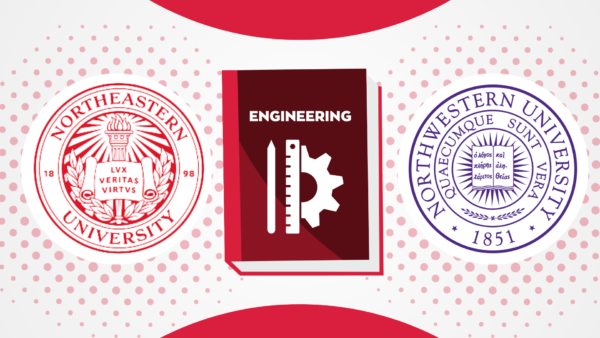
Ranked 17th in the country, the McCormick School of Engineering is one of the most sought after schools at NU. The school follows the ‘whole brain engineering’ ideology, training its students to integrate analysis, logic, synthesis, and maths (elements of left-brain thinking) with intuition, metaphorical thought, and creative problem solving (right-brain thinking) in order to create well-rounded engineers. The school offers varied undergraduate, graduate and doctoral programs in engineering that allow students to take up a multidisciplinary integrated approach to this field of study.
The school also works in close association with the Segal Design Institute, Farley Center for Entrepreneurship and Innovation, Northwestern Institute on Complex Systems, and the Centre for Leadership at NU.
Its academic departments are –
- Biomedical Engineering
- Chemical and Biological Engineering
- Civil and Environmental Engineering
- Computer Science
- Electrical and Computer Engineering
- Engineering Sciences and Applied Mathematics
- Industrial Engineering and Management Sciences
- Materials Science and Engineering
2. Business and Management

Northwestern is also home to the Kellogg School of Management which ranks 12th in the world for its MBA program (QS World University Ranking for MBA, 2024). Accredited by AACSB, this school primarily offers graduate level programs for students across the globe. The school is renowned for its cross-disciplinary curriculum, collaborative culture, and career management resources, making it highly sought after by recruiters from all over the world.
They primarily offer MBA and Masters in Management. Northwestern does not have a dedicated business major at the undergraduate level. However, Northwestern students can sign up for the elite Certificate Program for Undergraduates – a four course academic program that prepares students for careers in consulting, financial services and other data-driven professions.
3. Journalism

The Medill School of Journalism has a history of being a leader in education and research in the field of journalism and communication for over a century. It is the only top tier US university that offers an undergraduate degree in journalism. It emphasises on learning from real world experiences at the local, national and international level. The school also has a network of more than 18,000 alumni working in journalism, media, communications and other industries all over the world. The school also offers a graduate degree in Integrated Marketing Communications, to help students understand and engage consumers in the digital age.
Courses offered include –
- BSc Journalism
- MSc Journalism
- Masters in IMC
What are the top three courses to study in Northeastern?
1. Computer and Information Science

‘Computer science is for everyone’ is the motto that drives Northeastern’s Khoury College of Computer Sciences. Ranked 175th in the world by QS Subject Rankings for Computer Science, this school offers some of the most popular programs. Set up in the 1980s, the Khoury College is one of the nation’s oldest colleges dedicated to computer science.
This college offers over 48 undergraduate combined majors and 9 graduate programs to its students. Khoury College is also partnered with over 800 corporations and organisations to provide co-op opportunities to its students.
The core undergraduate programs include
- BA/ BS in Computer Science
- BS in Cybersecurity
- BS in Data Science
Graduate programs include specialisations in Computer Science General, Cybersecurity, Data Science, Artificial Intelligence, Health Informatics, Robotics, Game Science and Internet of Things.
2. Business and Management

The D’Amore-McKim School of Business offers business-specific and interdisciplinary courses at both the undergraduate and graduate level. Accredited by the AACSB, it is ranked 11th in the US for undergraduate international business and 23rd for MBA by US News and World Report. Like with all schools of Northeastern, numerous internships and co-ops are made available for its students.
Degrees cover areas such as Accounting, Analytics, Computer science, Design & communications, Entrepreneurship & innovation, Family business, Finance, Healthcare management, International business, Law, Life sciences, Management, Marketing, Strategy and Supply chain along with the principles of Business Management. It is one of the few schools that encourages collaborations and interdisciplinary study across all scientific fields.
3. Engineering

With a strong emphasis on innovation and multidisciplinary research, NEU’s College of Engineering offers some of the most popular majors in the university. The College of Engineering runs 20 different research centres and institutes and has over 3050 co-op partners for their students to gain practical, applicable knowledge. The school ranks 32nd for undergraduate and 37th for its graduate programs in engineering.
The College of Engineering offers more than 65 undergraduate and graduate engineering degree programs at the BS, MS, and PhD level, as well as a wide range of minors and graduate certificates, including the Gordon Engineering Leadership Program which can be combined with any master’s degree. Moreover, the school also offers a PlusOne accelerated master’s degree option for undergrad engineering students at Northeastern.
Notable Faculty, Alumni and Research Facilities
Northeastern University
While not directly associated with Nobel laureates, Northeastern has a long line of distinguished alumni who have gone on to become CEOs, founders, venture capitalists, ministers, senators, comptrollers, chief justices, astronauts, scientists and so on.
As mentioned earlier, interdisciplinarity and experiential learning are at the centre of NEU’s pedagogy. The university’s 40+ multidisciplinary research centres and institutes enable its scholars and students to push the boundaries of their disciplines. In 2023, NEU gained over $230.7 million in external research awards for its use-inspired research.
Northwestern University
A number of Nobel laureates have either taught or studied at Northwestern. This illustrious list includes
- Fraser Stoddart (Chemistry)
- John Pople (Chemistry)
- Bengt Holmström (Economics)
- Dale Mortensen (Economics)
- Leonid Hurwicz (Economics)
- Roger Myerson (Economics)
- Edward Prescott (Economics)
- Robert E. Lucas Jr (Economics)
- Franco Modigliani (Economics)
- George Stigler (Economics)
- Saul Bellow (Literature)
- Robert Furchgott (Medicine)
- Ferid Murad (Medicine)
- John Eccles (Medicine)
- Ralph Bunche (Peace Prize)
A multidisciplinary approach is at the core of Northwestern academics. The university supports over 50 research centres, for areas including nanotechnology, biological sciences, sustainability, public policy and more, that enable students to question existing knowledge and continue to learn and discover new information. Northwestern’s research budget crossed $1 billion for the first time in 2023 and has continued to increase in 2024.
| Academics – Key Similarities and Differences |
| 1. Northeastern is renowned for its cooperative education program that prioritises simultaneous learning and work experience. While Northwestern has a co-op program, it is not as extensive as NEU.
2. NEU follows a semester system while NU follows a quarter system. The quarter system allows more students to graduate with double majors. 3. In terms of university rankings, NU is comparable to the Ivy Leagues. NEU ranks 53rd in the country. 4. NEU a policy of transferring AP credits earned in high school towards a college degree. At the discretion of the specific department, AP scores of 4 or 5 (or the IB equivalent) can be accounted for credit. At NU, high school college credits may or may not count towards degree requirements since the policy varies with each college. 5. Both schools offer numerous study abroad options that allow students to attend a semester or a year abroad in any of their partner institutions. 6. Both schools offer compulsory core curriculum for students of all majors to build an intellectual foundation and develop well-rounded skill sets. |
Northeastern vs Northwestern: Fees and Scholarship Opportunities
As a prospective student trying to decide which is better Northeastern or Northwestern, the next important aspect that has to be looked into is finance. The cost of tuition, additional expenses, housing, and the kinds of scholarships offered are key points that one needs to factor in, before making a decision.
The following table will help you compare these two prestigious institutions while answering these significant questions.
| Northeastern | Northwestern | |
| Annual Tuition (Bachelor’s) | Around $62,000 | Around $64,887 |
| Annual Tuition (Master’s) | $40,000 – $65,000 | Around $65,000 |
| MBA Tuition | $74,675 | Around $87,000 |
| Housing (yearly, room and board) | Around $18,000 | Around $21,000 |
| Scholarship Type | Need-based and Merit Options | Only need-based |
| Eligibility | Need-based: Only home students
Merit-based: Home and international students |
Both home and international students can apply to NU’s need-based scholarships. |
| Average need-based aid | ~ $48,000 to $52,000 | ~ $65,000 |
| Percentage of undergrad students receiving some form of financial aid | Around 75% | Around 60% |
| Merit Scholarship | Dean’s Scholarship (up to $28,000)
Eligibility: |
Northwestern does not award scholarships based on academic merit. |
| Admission Decisions | Need-blind | Need-aware only for international students |
| Demonstrated Need Cover | 100% | 100% |
Note:
1. Northwestern’s tuition fee is calculated based on typical attendance during three quarters of an academic year. The fee is bound to increase should you also choose to take courses in the summer term.
2. The tuition fee amounts in this table are indicative figures and can vary depending on the choice of major and the number of credits per semester. They demonstrate only the cost of tuition. Additional expenses such as books, student organizations, and health insurance are not included.
3. A need-blind admission policy denotes that the university does not consider financial status while assessing a candidate. However, Northwestern has a need-aware policy for international candidates. It means a request for financial aid or the amount requested can factor into your admission decision.
Northeastern vs Northwestern: Student Life and Post Graduation Opportunities

Looking beyond academics and finance, let us look at some other aspects of the Northwestern vs Northeastern debate that might factor in your decision-making.
1. Location
Northeastern:

Boston Skyline,
Source: Wikimedia Commons
NEU is located in the heart of Boston, Massachusetts. Despite being one of the oldest cities in the United States, Boston, at its very core, is a college town. It is home to 35 universities, colleges and community colleges. World-renowned institutions, including Harvard and MIT, are also located just outside Boston City.
Besides being a student city, Boston is known for its history, cultural diversity and vibrant arts scene. Be it museums, theatres, restaurants or places to enjoy nightlife, Boston provides plenty of opportunities for students to explore.
If weather is an issue of consideration, Boston has marginally higher temperatures during winter compared to Chicago, while the average summer temperatures are almost the same. Boston winters are also slightly shorter than those in Chicago. However, Boston gets about 12 inches more rain and snow than Chicago.
Northwestern:

Evanston, Illinois. Source: Wikimedia Commons
Often associated with Chicago, NU is actually located in Evanston, a suburb about 13 miles north of the Chicago city centre. For a Northwestern student, Evanston offers everything required without the bustle of a metropolitan city like Boston. If you crave the excitement of the city, Chicago is only a short drive away.
While Evanston might not have the same amenities as Boston, the NU campus is located on the shores of Lake Michigan that provides a scenic backdrop and adventurous activities for nature lovers. Illinois is also known for its snow and winds during winters, with temperatures dropping as low as -6 degree Celsius.
2. Campus
Northeastern:

Source: Northeastern
Located in the heart of Boston, NEU has a smaller campus, spreading over 73 acres. It is a designated space, creating a traditional American college atmosphere. Besides academic and residential buildings, the campus has modern-day amenities and recreation centres for varsity and intramural sports, student clubs, and libraries. The campus also boasts well-maintained lawns and tree-lined pathways, breaking the monotony of the cityscape.
In addition to Boston, NEU has campuses in other cities including Oakland and Silicon Valley (California), Arlington (Virginia), Burlington and Nahant (Massachusetts), Charlotte (North Carolina), Miami (Florida), Portland (Maine), Seattle (Washington), Toronto (Canada) and London (UK).
Northwestern:

Source: NU
NU has a sprawling campus in Everton spread over 240 acres, located on the banks of Lake Michigan. Lakes, gardens, lawns and an arboretum are integrated into the campus. Like their academics, their campus is also multidimensional, combining modern facilities with age-old traditions.
Some student-favourite spots include the Deering Meadow, which overlooks a Gothic-style building, the Shakespeare Garden, the Dearborn Observatory, and the Annenberg Hall, which provides a panoramic view of the lake. The Everton campus also has a beach that students flock to when the sun is out.
In addition to Everton, the university also has a campus in downtown Chicago that houses its medical, dental, law, and business schools. The university also has an international campus in Doha’s Education City in Qatar, offering undergraduate programs in Communication and Journalism.
3. Student Population
Northeastern:
In 2023, NEU had a full-time undergraduate enrollment of 21,732 and a graduate enrollment of 14,896. Over 9,000 of them are overseas students from over 140 countries. NEU is one of the most popular universities for international students in the US. Their student body is extremely diverse, creating a multicultural learning environment.
Northwestern:
Compared to NEU, NU has a much smaller student body. It is home to over 8,000 full-time undergraduates and 8,000 full-time graduate students. If you include research scholars and part-timers, the total enrollment is around 21,000. When compared to the physical size of the campus, the total number of students is much lower at NU. Of the 21,000, about 9,000 are international students from over 120 countries.
4. Housing
Northeastern:
The university traditionally requires all first and second-year undergraduate students to live on campus, after which they can decide to continue living on campus or seek accommodation elsewhere. This experience has been designed to help students build strong community living environments that support personal development and academic success. Undergrads who enter the uni as first-year students are guaranteed housing for their four-year period of study. About 50% of NEU undergraduate students choose to live on campus for the entire duration of the study.
Types of accommodation available –
- Dorms or residence halls (for first and second-year students)
- Suite style
- Apartments
Northwestern:
Like Northeastern, NU also requires first and second-year undergraduate students to live on campus. Incoming transfer students are also required to live on campus for their first year of study. It is the university’s initiative to support social and academic transitions. The housing options are as follows –
- Residence Halls
- Residence Colleges (the only difference between halls and colleges is that colleges have more faculty involvement than residence halls)
- Special Interest Housing
- All Gender Housing
- Graduate Housing
5. Sports and other extracurricular student activities
Northeastern:
Sports are integral to Northeastern’s culture. NE students have a fierce sense of pride and community over their 19 Division I athletic teams. Referred to as the Northeastern Huskies, their mascot is Paws, a Husky. The university is also home to over 400 student clubs and organisations, with many of them focussing on giving back to the community. Moreover, there are over 35 frats and sororities contributing to a thriving Greek life.
Northwestern:
The oldest Division I collegiate athletic conference is called the Big Ten and Northwestern is one of its founding members. The university has robust football and lacrosse programs from which athletes compete at the national level regularly. The university has 18 Division I teams. There are also top-notch facilities and athletic centres for students to use. The university mascot is Willie, the Wildcat.
Besides athletics, Northwestern is home to over 500 student organizations and clubs, numerous recreational facilities, cultural centres, and various events, making sure that the students experience a vibrant campus and gain a well-rounded university experience. Greek life is also an important part of campus life with over 40% of the student community involved in fraternities and sororities.
6. Internship Opportunities
Northeastern: Cooperative education or Co-op is the cornerstone of NEU’s experiential education model. For over a century, NEU has been one of the world leaders in creating co-op opportunities for its students. The university is partnered with over 3,000 organisations for co-ops across the globe. This is what sets NEU apart from Northwestern.
By alternating periods of academic study with full-time work, learning happens seamlessly across the theoretical and the practical. Moreover, students gain professional experience by the time they even complete their bachelor’s degrees and are often headhunted by the same organisations they have interned in. It is a truly integrated experience that is open to all students of NEU.
Northwestern:
NU has a well-networked Career Advancement cell that guides and assists students to seek out internships during the course of their study. However, it is not a requirement like it is in NEU. Despite being optional, about 73% of NU graduates end up completing one or more internships during the course of study.
7. Work Opportunities
Northeastern:
If we analyse the graduating class of 2022, we can see that nearly 83% are employed full-time, about 12% are pursuing additional qualifications, and about 1.5% are employed part-time or freelancing. A significant majority of the graduates (over 24%) go into
Professional, Scientific, and Technical Services. Over 71% of Northeastern graduates have a starting salary of $70,000 or higher. The increased salary and higher employability rates could be a direct result of the professional experience gained during co-op.
The university’s career services has ranked #3 in the U.S. by Princeton Review, marking 10 consecutive years that Northeastern has been ranked nationally.
Northwestern:
Northwestern has a graduate employability rate of about 94% and due to the university’s reputation, the median salary is around $85,000. Students graduating from the Kellogg School of Management have broken records in 2023, reaching an all-time high median total compensation of $207,000, in a variety of industries.
Summary

Deciding on ‘Northwestern vs Northeastern’ is not a simple task. Both are highly reputed schools with distinct advantages on either side of the debate. So, here is a summary of the differences.
You can consider NEU if
- You want a co-op experience as a part of your study and gain professional experience
- You want to experience college life in a big city
- You want to live amidst a large student community
- You want to explore work abroad through their global co-op programs
- You are interested in entrepreneurship.
Consider NU if
- Ranking and reputation is important to you
- You want to live in a suburban town which also has easy access to a big city
- You are focussed on outcomes and graduate employability – over 94% of NU graduates were employed within 6 months of graduation.
- You like having smaller class sizes and easy access to faculty or TA.
- You love to walk – Evanston is one of the most walkable college cities in the US.
While these can be factored into your decision, the ultimate call rests on whether the course curriculum and the learning outcomes meet your career plans. The most significant part of your research is to compare courses, syllabi, electives, faculty and research facilities of your preferred degree program, speak to current students, and then decide depending on which school better suits your needs.
We understand that becoming an international student can be very thrilling, but the prep and paperwork of it all can get overwhelming. The easiest way to reduce your stress is to sign up with TC Global.
We simplify international education, learning, and mobility through connecting students, universities, and a global community on a single platform where there are over 1000+ education providers and over 80,000+ courses.
Our platform enables students to study anywhere in the world in just a few steps. From search and discovery and finding the right course fit for you, to applications, visas and departure – we see you through it all.
To move forward with us, download our app or visit tcglobal.com and sign in to create an account on our student platform and onboard with us in quick, easy steps.! 🚀
Then simply set up a visit Calendly.com/tcglobal to pick a Relationships Team closest to you and choose a slot to meet with a Relationship Member. Be it Northeastern vs Northwestern or any such debates, our experts will be with you every step of the way to help you decide.
Let’s shape your future together.
You May Also Like
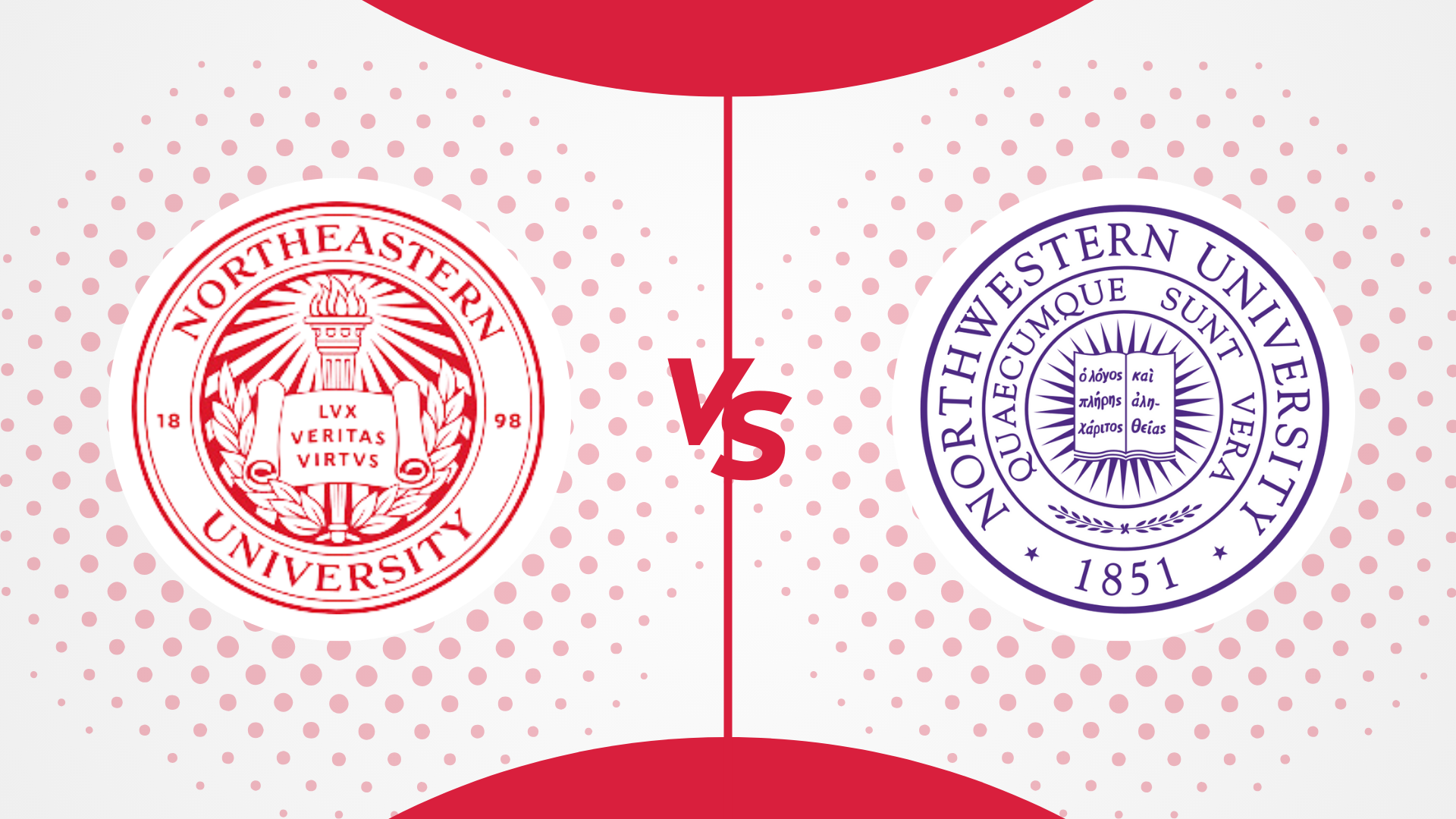
Compare more universities in USA
-

Purdue vs UIUC: How Do They Compare in 2025?
December 16, 2024 -
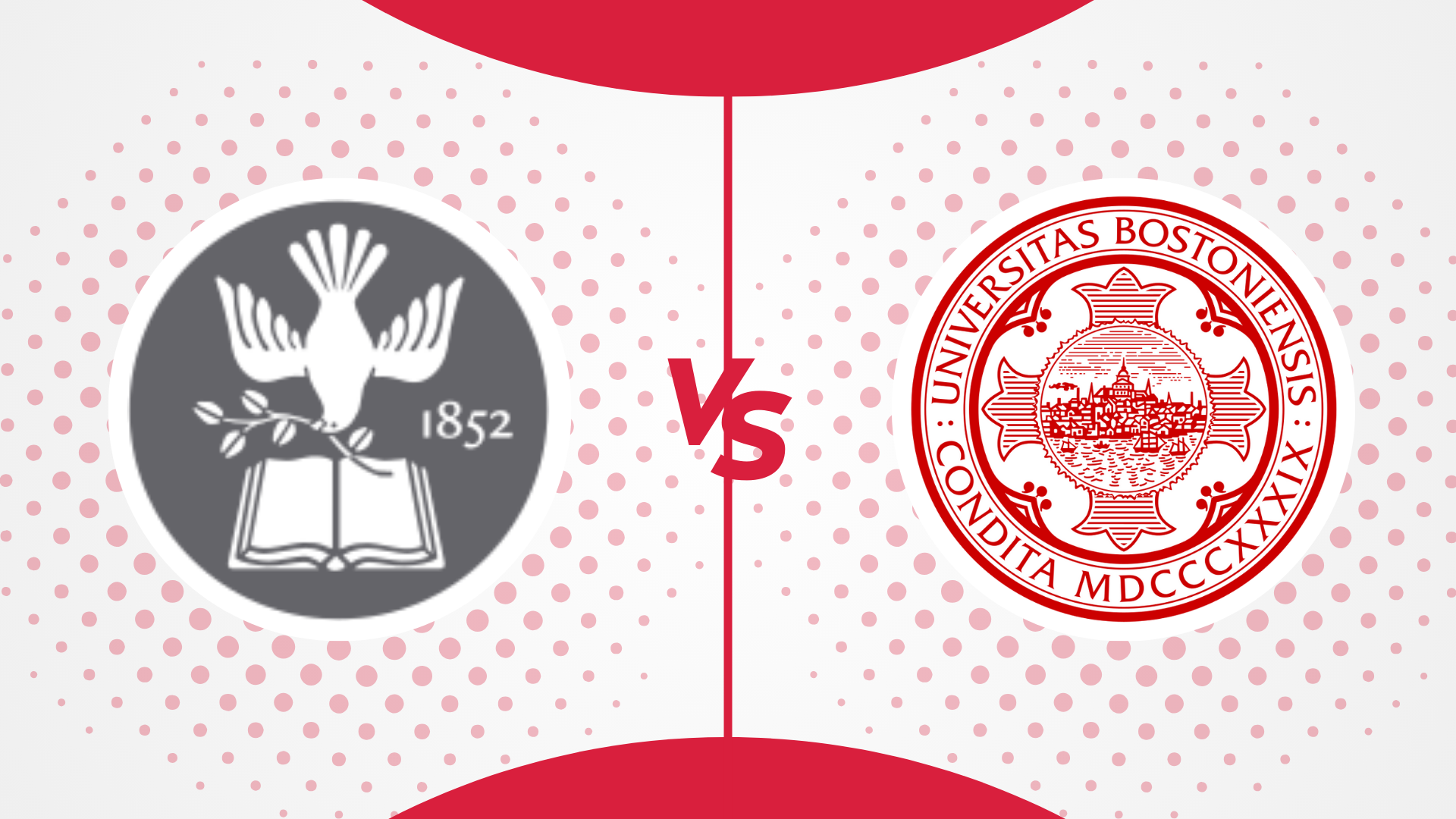
Tufts vs BU: How Do They Compare in 2025?
December 16, 2024 -

UIUC vs Georgia Tech: How Do They Compare in 2025?
December 3, 2024 -

Georgia Tech vs UT Austin: How Do They Compare? [2025]
September 24, 2024 -

UC Davis vs UC Irvine: How Do They Compare in 2024
September 10, 2024 -
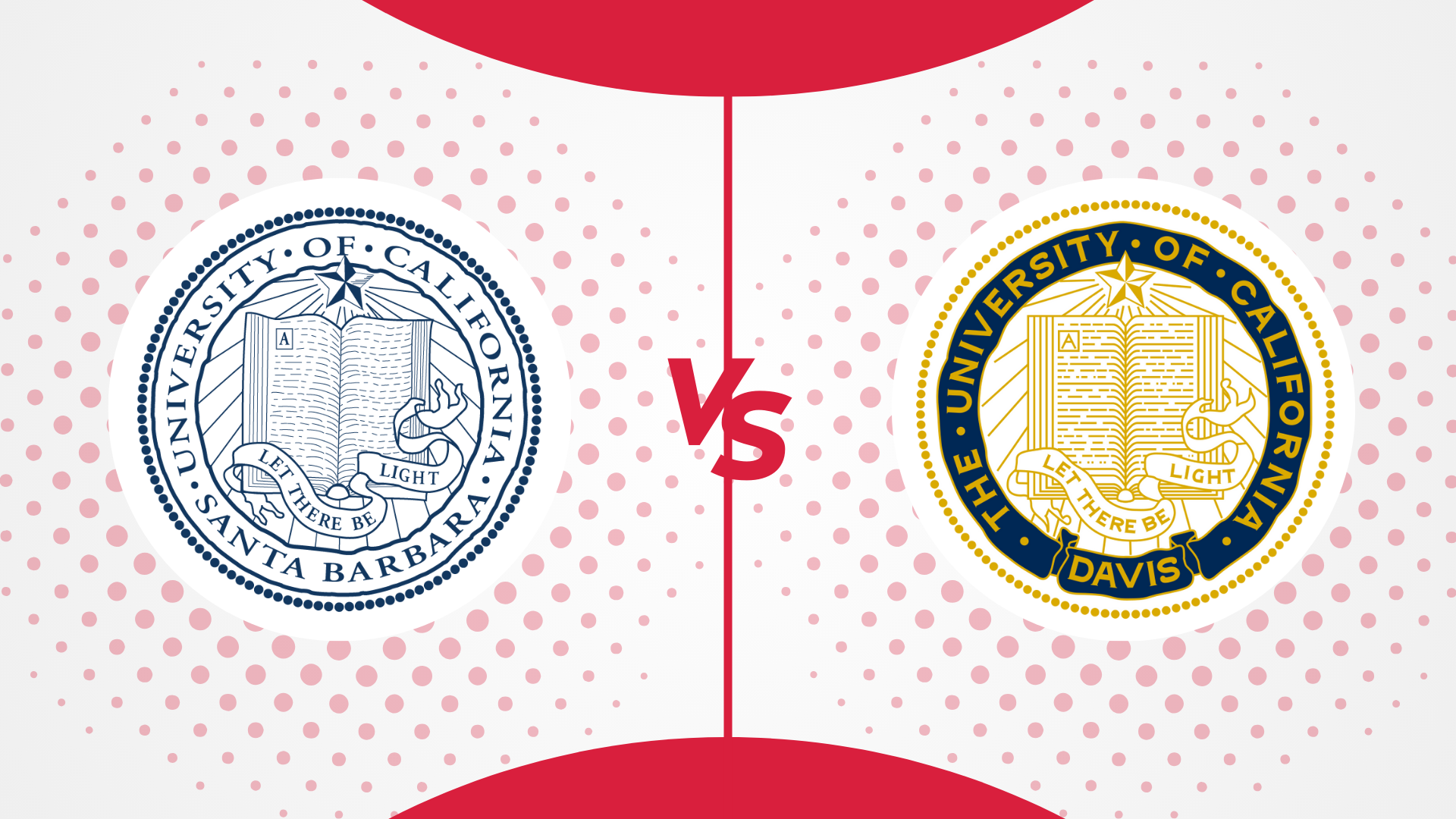
UC Santa Barbara vs UC Davis: How Do They Compare? [2024]
August 30, 2024 -

UC Davis vs Santa Clara University: How Do They Compare? [2024]
August 23, 2024 -

University of Chicago vs Northwestern University: How Do They Compare
August 20, 2024 -

Georgia Tech vs MIT: How Do They Compare? [2024]
August 7, 2024 -

Caltech vs MIT: How Do They Compare [2024]
August 2, 2024 -

MIT vs Harvard: How Do They Compare [2024]
July 27, 2024 -

Cornell vs Harvard: How Do They Compare? [2024]
July 27, 2024 -

Yale vs Harvard: How Do They Compare [2024]
July 22, 2024 -

Harvard vs Princeton: How Do They Compare [2024]
July 16, 2024 -
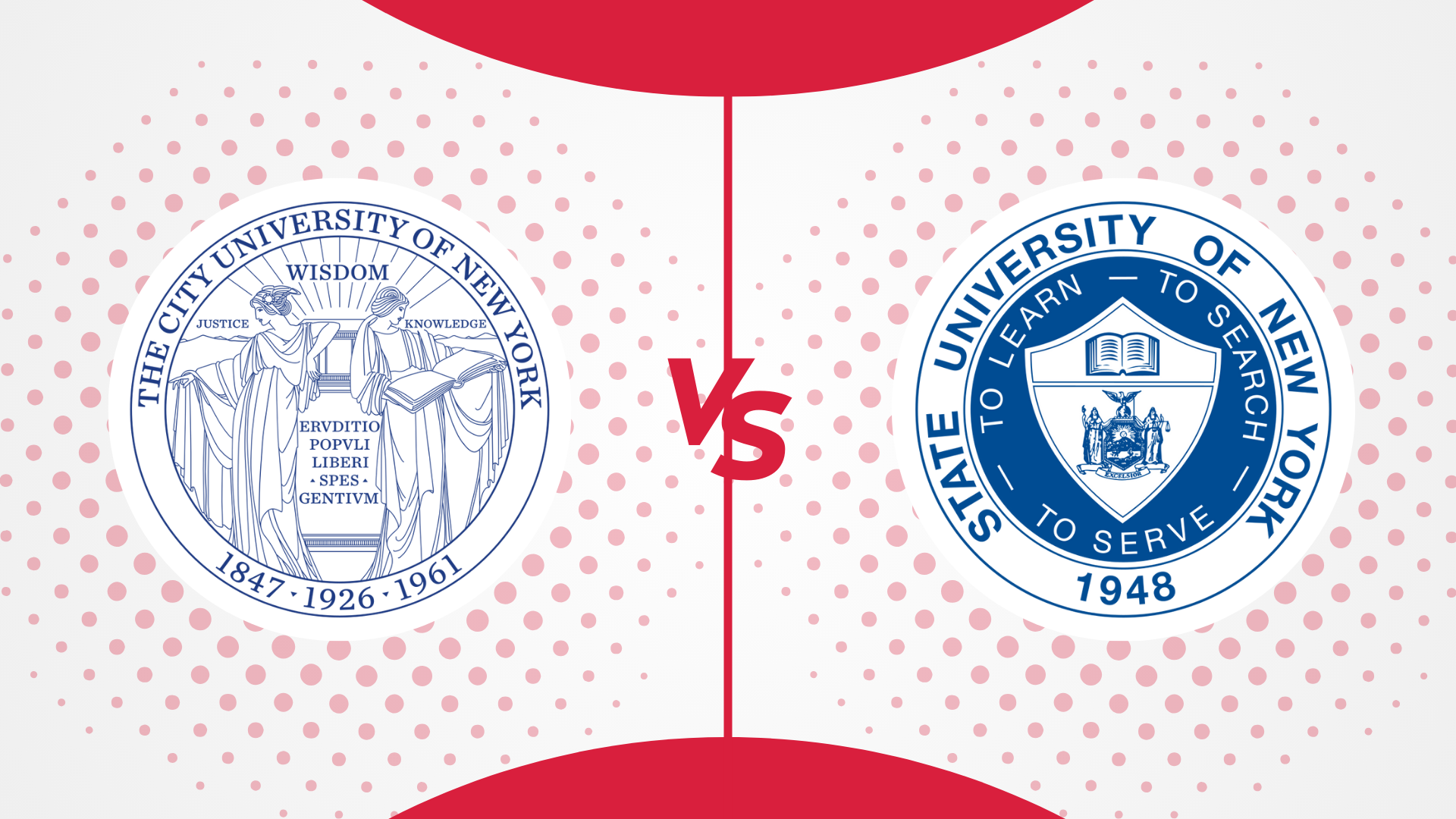
CUNY vs SUNY: Which One is For You in 2024
July 9, 2024 -

UCSD VS UCSB: Which One is Better For You in 2024
July 9, 2024 -

USD vs UCSD: Which one should you choose in 2024?
July 9, 2024 -

UC vs CSU: Which One is Better in 2024?
July 9, 2024 -
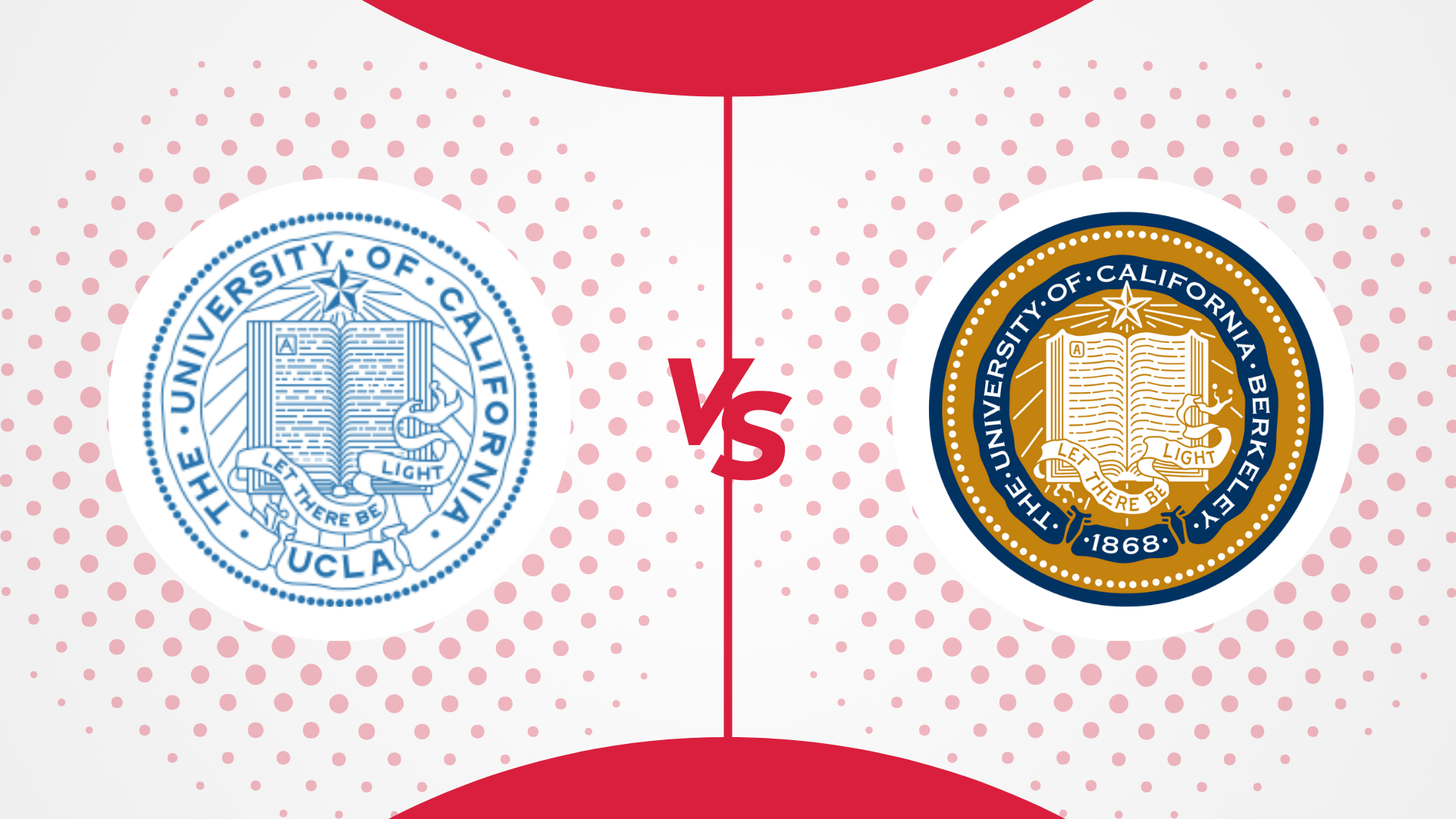
UCLA vs UC Berkeley: Which One is Best in 2024
July 9, 2024 -

University of Arizona vs Arizona State University: Which One is Better in 2024
July 9, 2024 -

Penn State vs UPenn: Which is Better for International Students in 2024
July 9, 2024 -

Northeastern University vs Purdue University – Which One is Better in 2024?
July 9, 2024 -

Boston College vs Boston University: Which One is the Best in 2024?
July 9, 2024 -

LSU vs UCLA: Which Is Better For You In 2024?
July 8, 2024 -

NYU vs Boston University: Which One Is Better For You In 2024
July 8, 2024 -

USC vs UCLA: Which One Is Better For You In 2024?
July 5, 2024 -
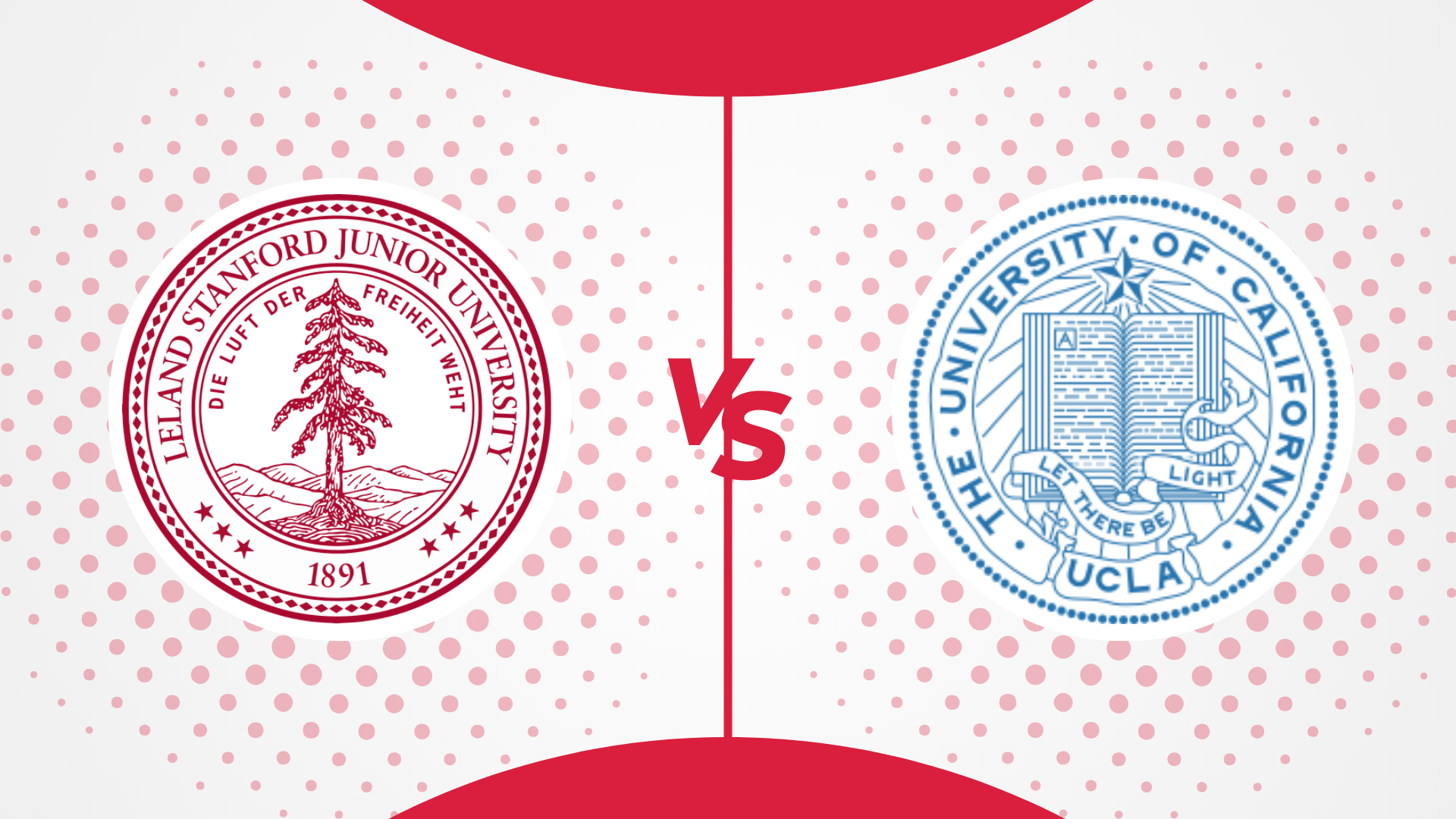
Stanford vs UCLA: Which One is Better For You in 2024
June 28, 2024 -

USC vs Stanford: Which One is Better For You in 2024
June 28, 2024 -

University of Florida vs Florida State University: Which One is Better For You in 2024
June 28, 2024 -

NYU vs Columbia: Which Is Better In 2024?
June 28, 2024 -

Princeton vs Columbia: Which Is Better In 2024?
June 28, 2024 -

NYU vs Cornell: Which One Is Better In 2024?
June 28, 2024 -

Boston University vs Northeastern: Which one is best in 2024
June 28, 2024 -

NYU vs UCLA: Which Is Better For You In 2024?
June 28, 2024














